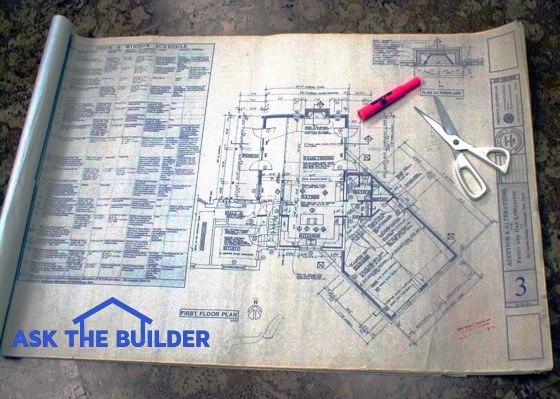House Plans and Contracts
Today, I delivered 3.5 grueling hours of intense testimony during a deposition. I was issued a subpoena to come forth as a factual witness in a civil lawsuit between a builder and a neighbor of mine. Testimony given in a deposition has the same power as that given in an actual courtroom. I was sworn to tell the truth, more importantly the whole truth, and all of the questions and my answers were transcribed by an official court reporter.
So what does this have to do with your new home you might ask? It has everything to do with it. The disagreements between the parties in this lawsuit are many and most, if not all, of them can be traced back to a poorly worded contract, plans that had minimum detail, and expectations on the part of the homeowner that may not be realistic in the eyes of many consumers.
How important are detailed blueprints?
All too often I discover that people create an image in their mind of what they want their new home to look like. That is fine. It is exciting to dream about something new that gives great pleasure and especially something that might actually go up in value over time. But the challenge for many people, including some draftspeople and architects, is to verbalize or communicate those wishes, dreams and thoughts into a language the builder and subcontractors understand.

The actual plans for your new home are the cornerstone to the foundation of the relationship between you, your builder, his suppliers and subcontractors. It becomes your voice when you can't be at the jobsite to talk over the screeching of saws and the pounding of hammers.
How would you like me to build your new home? It's probably impossible for me to fit your job into my schedule, but I will gladly share hundreds of my tricks and building secrets with you and your builder. Check out my New House Specifications.
Excellent plans, ones that include numerous detailed drawings of specific elements of the home, spreadsheet formatted schedules that contain each aspect of how a room is to be finished, which exact plumbing fixtures go where, what appliances are being installed, etc. can actually speak clearly for the entire length of the job. Believe it or not, it is entirely possible for a builder to receive a set of plans and specifications that are so detailed, they never have to ask one question of the architect or homeowner. The finished product turns out exactly as the homeowner desired, assuming, of course, the homeowner understood the plans.
What should be in the contract?
Once you have great plans and written specifications, you need a good contract. I am not an attorney but I can tell you that all sorts of things need to be addressed. For example, specific events need to happen for monies to be paid. A good contract talks about what happens if a change order is issued. Good contracts also spell out dispute resolution choices. Keep in mind that the plans and specifications need to be dated and the contract should refer to these with respect to the work that will be done. Consult with several good attorneys and find one that can show you a copy of a contract you understand and one that covers many of your concerns.
Try to address quality expectations up front. To the best of your ability produce photographs or cite things that both you, the builder and other parties can actually see that represent the quality you are looking for. It is okay for you to expect perfection, but clearly define what perfection means to you and be prepared to pay for it.
I talked about perfection today in my deposition. My discussion included a reference to a double standard. I felt it was very unrealistic for a person who makes mistakes in his or her work and still grabs a paycheck at the end of the work week to expect total perfection from another person.
Poor workmanship and perfection are never to be confused. Many instances of defects in new construction are poor workmanship and those errors must be corrected by the builder. Some flaws that people point out may not be workmanship defects but actual flaws in the material. For example, you may look at the face of a top model from five feet away and think she is gorgeous. But ask her if you can use a 10 power magnifying lens to look at the skin on her face. If you blink for a moment as you adjust the lens from her skin, you might think you are looking at the surface of the moon. Always keep in mind what you are looking at.
Column NH053